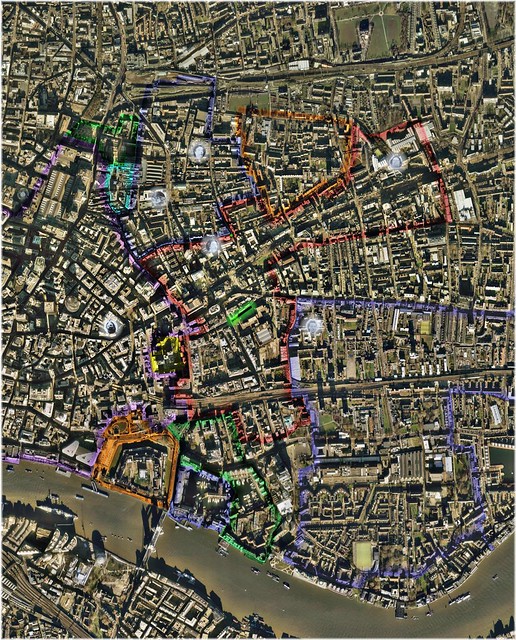Originally posted by byghostlight
View Post
Originally posted by Roy Corduroy
View Post
But, I would argue with utmost conviction that each of them was colloquial.
Even in cases of documentation that would seemingly have called for 'official', if not completely 'formal' usage, such as the one, which you have cited, above; I would contend, with the same degree of conviction, that any reference to 'Matfelon' was neither 'official', nor 'formal', but indeed 'colloquial'.
On the basis of everything that I have been able to gather, thus far, I am thoroughly convinced that the St. Dunstan Stepney Chapel of Ease that came to be known as the 'White Chapel', was dedicated to 'St. Mary Matfelon'¹; but, that upon its consecration as a Parish Church, in ~1329, it was rededicated - simply - to 'St. Mary', and accordingly consecrated, as the 'Parish Church of St. Mary Whitechapel'.
¹Matfelon being, presumably, the name a major benefactor of the chapel.
If the 'Matfelon' tag was not dropped upon the church's 1329 consecration, then it was most certainly dropped before the onset of the nineteenth century. Of that, I am certain!
Even so, I am inclined to believe that there was never a Parish, or Parish Church, ... of 'St. Mary Matfelon Whitechapel'.
While my inclination is based upon a variety of Parish Baptismal & Matrimonial Registers, Parish Boundary Markers, Census Records, tabulated Census Reports, etc ...; its single most significant basis is the multitude of Ordnance Surveys, and other similar cartographic sources of information, that we are fortunate enough to have at our disposal.
The 1870's series and 1890's series of the Ordnance Survey both clearly delineate an abundance of Parishes of ... St. Mary Something-or-Other Some-Place-or-Other:
St. Mary Abbotts Kennsington
St. Mary Stratford Bow
St. Mary Magdalen Bermondsey
St. Mary Magdalen Woolwich
St. Mary Aldermary (City of London)
St. Mary Mounthaw (City of London)
St. Mary Somerset (City of London)
St. Mary Colechurch (City of London)
St. Mary le Bow (City of London)
St. Mary Bothaw (City of London)
St. Mary Woolnoth (City of London)
Etc ...
But, in the case of Whitechapel: "St. Mary Whitechapel", i.e. no mention of 'Matfelon'.
However, ...
In the 'Large Scale' versions, of each series, the Parish Church of St. Mary Whitechapel is labeled:
St. Mary's Church
Site of
White Chapel
or
St. Mary Matfelon
Site of
White Chapel
or
St. Mary Matfelon
I believe that we can gather a great deal from that description.
~~~
Originally posted by Colin Roberts
View Post
I believe that colloquialisms can be extremely misleading, in the context of Victorian London's political geography.
Admittedly, the use of the 'Matfelon' tag is not going to cause any confusion, as might the Pall Mall Gazette's use of "Fulham Workhouse", i.e. an abbreviated form of the colloquial 'Fulham Road Workhouse', in reference to ...
Originally posted by Colin Roberts
View Post





Leave a comment: